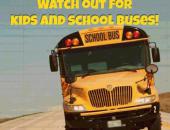Local News
61-Mile Yard Sale This Weekend; Drivers Use Caution
September 02nd 2015 by Dee Loflin

"It's a fun weekend that people look forward to each year," says Traffic Engineer Craig Compas, "but we want people to remember that there's more traffic and more congestion along Route 61 this weekend than any other and drivers need to keep that in mind."
MoDOT will do its part to bring the safety message to the forefront. Message boards will be in place along the route to alert drivers of the unusual traffic patterns and promote safe driving.
"We really want drivers to be alert-to be aware of their surroundings, to be aware of sudden stops and to look for pedestrian traffic," Compas says. "It's a big event locally, and we want everyone to enjoy themselves and be as safe as possible."
All the fun begins Thursday, September 3rd morning through Saturday.
For more information, contact Compas at (573) 472-5310 or call MoDOT's Customer Service Center toll-free at 1-888-ASK-MODOT (1-888-275-6636).
Last Updated on September 02nd 2015 by Dee Loflin
https://showmetimes.com/Blogpost/uume/61Mile-Yard-Sale-This-Weekend-Drivers-Use-Caution





